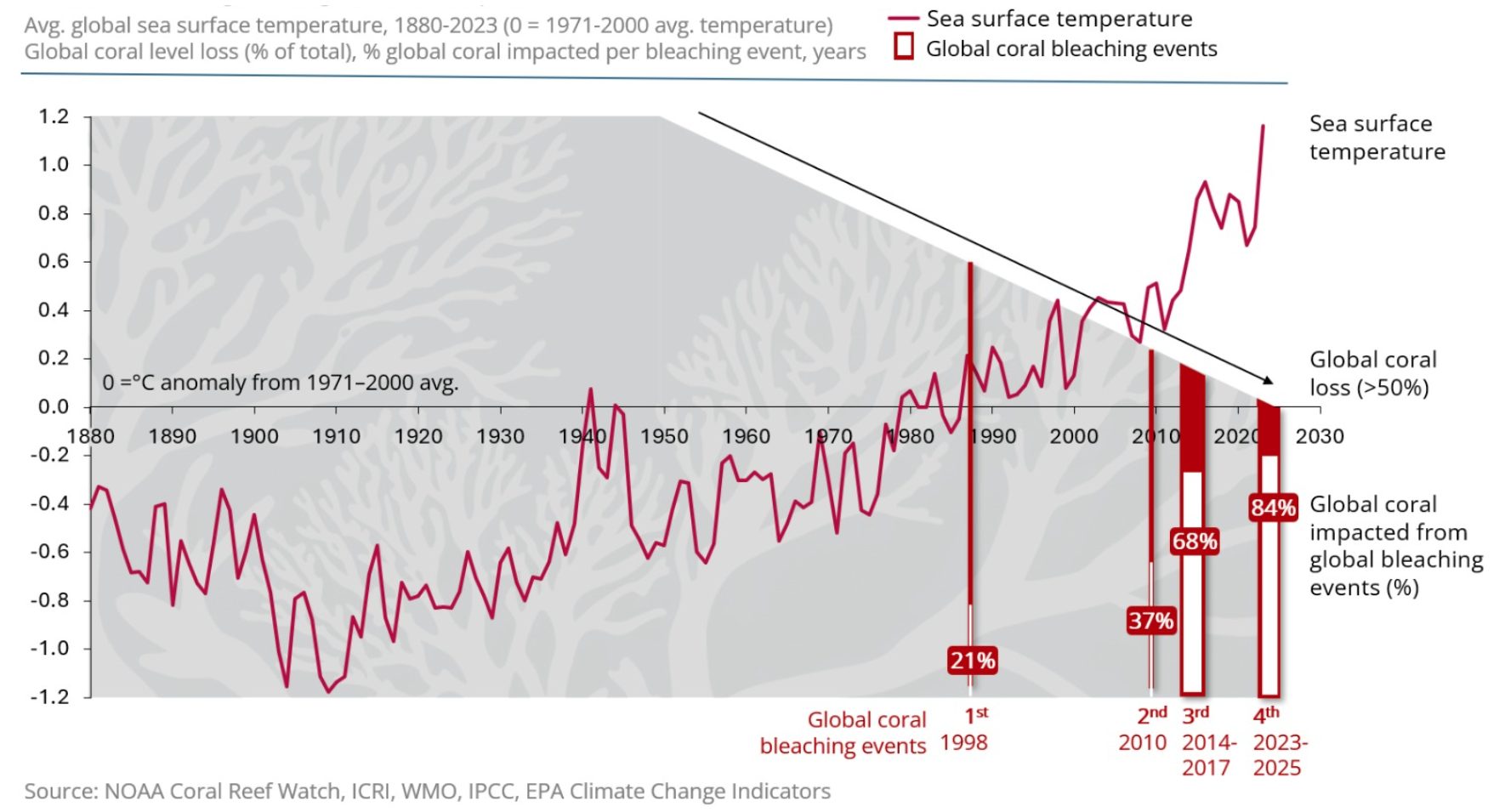Coral moonshot
Since 1957, we’ve lost half of all coral reefs. Today, 84% of what remains is bleaching—threatened by sustained heat stress that’s breaking past records and affecting even the most resilient species. We are now in the fourth global bleaching event, impacting reefs in at least 82 countries as of May 2025.
This isn’t just another natural cycle.
Earth has warmed 1.2°C in the past 150 years nearly ten times faster than any warming event in geologic history. The ocean has absorbed over 90% of that excess heat.
In past eras, like the Paleocene-Eocene Thermal Maximum, temperatures rose more slowly—by 5–8°C over thousands of years. That gave species time to adapt or migrate. Coral reefs had millennia to move to cooler waters. Global reef collapse was rare. Today, we’re seeing that level of stress unfold within decades.
What makes this moment even more dangerous is the convergence of pressures: Rapid warming + Acidification + Pollution + Overfishing + Habitat destruction. Together, they’re driving coral mortality on a global scale, something not seen in the fossil record.
If we lose coral reefs, we lose the ecosystems they support—from sea turtles and reef fish to crustaceans and countless species that depend on coral for food, shelter, or spawning grounds. An estimated 25% of all marine life relies on coral reefs at some stage of life.
Coral is the foundation. Without it, the web of marine life unravels. A biological collapse is in progress.
The Vision: A Coral Ocean Moonshot
We need a new way of organizing ourselves—one that aligns the tools, talent, and funding that already exist into a system capable of restoring coral at scale. This isn’t a call for another institution. This delivery structure could sit within an existing body, but it must function differently and be built for speed, scale, coordination, and impact.
At the heart of this model is a Program Management Office (PMO)—a central engine that drives coordination, holds delivery accountable, and accelerates learning across regions.
Here’s how it could work:
Where: Existing coral mapping efforts are used to prioritize the most critical refuges—areas with the highest chance of long-term survival under climate pressure.
What: Scientists contribute proven coral restoration and resilience techniques, building on decades of research.
Who: Indigenous and local communities, NGOs and other groups already stewarding these local ecosystems lead the frontline implementation work.
How: Practical training programs equip these frontline teams with the scientific tools and techniques they need to restore and protect reefs.
With what tools: Coastal digital twins track coral recovery, measure impact in near real-time, and share knowledge across geographies.
With what funding: Partners pool resources into coordinated funding streams, tied to clear recovery baselines and measurable results.
The PMO ensures that each part of this system moves in sync bridging science, finance, and implementation. It sets shared goals, connects local realities to global scientific knowledge, and ensures delivery stays on track to stop coral collapse.
Chart: Delivery architecture for frontline coral support
It’s time to break the cycle of scattered pilots and temporary programs. This coral ocean moonshot offers a faster, more focused path: powerfully local, globally connected, and backed by the science, tools, and funding to make lasting impact.
You can read the full concept note here or join the live working doc to comment and co-create directly.



